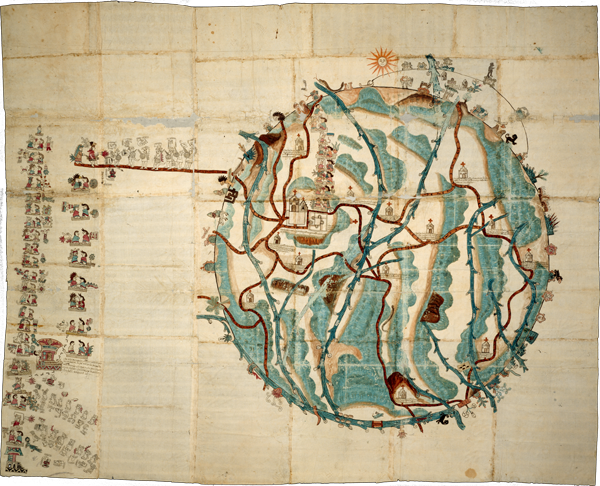glyph
Another scholar offers: Topograph of Teozacoalco. The topograph consists in a foundation or platform with ¿grecas?. Above this foundation is the temple, with a curious fan-shaped roof, in wich, there is a cocoa bean and two current of blood. On the lower part, on the foundation, is placed a flower. In left side there is a man who seems to pull toward himself the right wall of the palace or climb up the stairs of it. Surely all these elements are part of the name of the locality and have an ideographic or phonetic value. Teozacoalco is a corruption of Hueyzacualco, meaning "gran solar o sitio". Its Mixtec name is Chiyo Ca'nu, “fundación grande” o “gran cimiento” (two ways of saying large foundation). Resolution of the topograph is curious: In Mixtec tonal language there are many words with different meanings but with the same apparent writing and the difference is according to intonation. Chiyo "fundación" is represented by a wall, but Ca'nu "grande" was a difficult concept to transcribe in an image because the size of the codices was modest and it wasn't feasible to present a glyph that literally symbolizes something large. So, what was used in Latin is called a rebus "one thing for another," the use of one word to symbolically represent another of similar sound. The word Ca'nu is also a homophone of “breaking” or “doubling,” so, the representation of Teozacoalco in the pre-Hispanic codices (e.g. Selden 4: III and Bodley 15-III) is of a little man who seems to break or fold a wall of “grecas” (geometric patterned mosaic-like stones), whose action transcribes the sound “big.” [Fátima Irasema Martínez Reyes]

